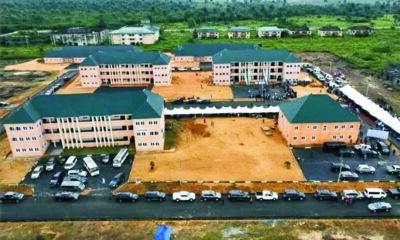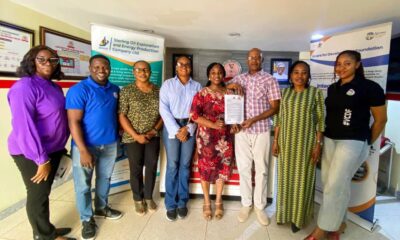Business
4 Questions to Help You Find the Best Current Transformers
What could be worse than arriving at a site to install a meter only to find that you are not equipped with the appropriate current transformer (CT)? As the saying goes, a craftsman is only as great as his tools; not having the right ones is not only a waste of time but also money. However, itentirely avoidable if you pre-plan this the right way.
Today you can easily find a current transformer available in a variety of sizes, styles, and amperage ranges. Some of them also vary in terms of accuracy and output as well. With so many variables, it is often challenging to choose the right transformer for a project.
However, selecting the right current transformer can be simplified by answering a few questions about your goals, site, and the project in hand. In fact, you may be able to straighten out of some of these details even before checking out a project site! That said, let us look at some basic questions that you must answer to choose the right option and save yourself plenty of troubles down the road!
What Power Meter Are You Using?
You need to understand that because a CT agrees with a meter doesn’t mean that it is your best option. In fact, your meter choice has a considerable impact on your CT choice.
So, you need to check if your meter is better for mV output CT or amp output? You must also check if the meter will be installed permanently, or are you planning to move the meter from one location to another?
How Many Amps Do You Want To Measure?
Another important consideration is to know the number of amps that will be measured. This is something you are likely to know before you visit your site because it is something determined by the goals of your project. For example, if your purpose is to measure a lighting load in a small office, then the CT requirement will be relatively smaller compared to the one for a large establishment.
It is also important to keep in mind that CT performs best when the current flow is anywhere between 10-100% of the CT full-scale value. It would help if you also considered Rogowski coils that are easy to install and work with a wide range. It is also critical to keep in mind that you get the maximum CT accuracy when the load operates to CT’s full rating possible. If the load is under 20A, then it is not advisable to use Rogowski coil because it will be too huge for the load.
If you be moving the meter between multiple loads, then the best solution is to keep at least two different sets of CTs in your repository – one for the small load and one for a large load. This way you will remain covered for all kinds of project settings.
What Are Your Project Types And Goals?
If you are thinking about your project type and goals, then it is essential to know the purpose of the end data. For instance, if you are planning to do a measurement and verification project (M&V), then a standard accuracy meter will be enough to reach your project requirements. However, if you use a revenue-grade meter for tenant submetering, then you need a maximum amount of accuracy. This is when a revenue grade CT would be a perfect choice.
What Is The Duration Of Your Project?
If you are planning to move the meter around a lot, then split-core, clamp-on, and Rogowski coil CTs can be a bit inconvenient to uninstall. In any case, regardless of the CT you choose, it is always advisable to first de-energize the circuit and follow complete safety precautions in your manual to move the CT safely.
If you have read enough and still feel unsure about the best CT for your project, then don’t hesitate to take help from an expert. Just discuss your project requirements and let them help you choose the right CT tailored to your needs.
Business
USTR Criticises Nigeria’s Import Ban On Agriculture, Others
The United States Trade Representative (USTR) has criticised Nigeria’s import ban on 25 categories of goods, claiming that the restrictions limit market access for American exporters.
This is the effect of President Donald Trump’s tariffs introduction on goods entering the United States, with Nigeria facing a 14 per cent duty.
The USTR highlighted the impact of Nigeria’s import ban on various sectors, particularly agriculture, pharmaceuticals, beverages, and consumer goods.
The restrictions affect items such as beef, pork, poultry, fruit juices, medicaments, and alcoholic beverages, which the United States sees as significant barriers to trade.
The agency argues that these limitations reduce export opportunities for United States businesses and lead to lost revenue.
“Nigeria’s import ban on 25 different product categories impacts United States exporters, particularly in agriculture, pharmaceuticals, beverages, and consumer goods.
“Restrictions on items like beef, pork, poultry, fruit juices, medicaments, and spirits limit United States market access and reduce export opportunities.
“These policies create significant trade barriers that lead to lost revenue for United States businesses looking to expand in the Nigerian market”, the agency said .
In 2016, Nigeria implemented the ban on these 25 items as part of efforts to control imports and stimulate local production.
Some of the banned items include poultry, pork, refined vegetable oil, sugar, cocoa products, spaghetti, beer, and certain medicines.
On March 26, 2025, the Federal Government also announced plans to halt solar panel imports to encourage local manufacturing as part of its push for clean energy.
Business
Expert Seeks Cooperative-Driven Investments In Agriculture
A leading agribusiness strategist and digital agriculture expert, Ayo Oluwa Okediji, has sought cooperative-driven investments in sustaining growth of poultry industry in Nigeria.
He said the poultry industry was at a defining moment and requires urgent structural reforms to secure its future and ensure long-term sustainability.
Speaking on the theme, “Strengthening Poultry Farming Through Cooperative Synergy and Strategic Investments”, at the recently concluded Oyo Mega Poultry Workshop 2025 in Ibadan, Okediji called on poultry farmers, cooperative leaders, financial institutions and policy makers to rethink the existing structure of the poultry sector.
He stressed the need to transition from fragmented, individually-driven operations to well-structured, cooperative-led enterprises capable of attracting sustainable financing and securing long-term viability.
He said, “Our poultry sector cannot thrive on individual effort alone. We need to organise ourselves into cooperative clusters, build strong governance systems and position ourselves to attract the level of investment needed to sustain this industry beyond this generation.”
Drawing on lessons from successful global cooperative models such as Rabobank in the Netherlands and Landus Cooperative in the United States, Okediji introduced the FarmClusters Poultry Model, a locally adapted solution developed by Agribusiness Dynamics Technology Limited (AgDyna), a subsidiary of AgroInfoTech Africa.
According to him, the model is currently being piloted in Oyo State in partnership with PANOY Agribusiness Limited and local poultry cooperatives.
Business
NACCIMA Proposes Hybrid Oil Palm Seedlings For Farmers
The Rivers State Representative of the Nigeria Chambers of Commerce, Mines, Industries and Agriculture (NACCIMA), Mr. Erasmus Chukwundah, has urged palm oil farmers to consider hybrid seedlings for planting, if they must break even in palm oil business.
Chukwundah said this recently at the Free Oil Palm Business Climate Smart Best Management Practice/Assistance Training organized by Partnership Initiative In Niger Delta (PIND) for Palm Oil Farmers in Elele, Ikwerre Local Government Area.
The Rivers representative said until palm oil farmers begin to consider such hybrid oil palm seedlings, they may not meet up with the daily increasing demand of palm oil in the market.
According to him, the seedlings produce up to 30 bunches at once that ripen same time.
He said PIND decided to partner with Oil Palm Growers Association of Nigeria (OPGAN) to ensure that the message was received by the targeted audience.
According to him, palm oil remained a popular choice of industry operators as it could be converted to many other products such as vegetable cooking oil.
He also noted that products such as motor tyers, marine ropes and others are now gotten from the palm tree.
Chukwundah, who is the immediate past Director-General of Port Harcourt Chamber of Commerce, Mines, Industries, and Agriculture (PHCCIMA), further warned against use of unrecommended fertilisers in growing oil palms.
He noted that such practices could limit its export value or chances as the foreign marketers have a way of detecting such .
He reiterated the need for organic fertilizers, including poultry droppings, to enable them have a natural palm oil.
“People must reduce physical contact with palm oil production. That is why we are campaigning for hydrolic oil mills. The foreign markets are no longer interested in crude method of palm oil production”, he said.
Meanwhile, one of the farmers, Sonny Didia, who appreciated Chukwundah’s commitment towards the concern of farmers, appealed for an urgent need for loan opportunity with low interest rate in order to enable them beat the target.
King Onunwor
-
Business2 days ago
USTR Criticises Nigeria’s Import Ban On Agriculture, Others
-

 Niger Delta2 days ago
Niger Delta2 days agoDELSU Spends N720m On Electricity Annually -VC
-
Rivers2 days ago
Perm Sec Tasks NUJ Leadership On Unity
-
Opinion2 days ago
Respecting The Traditional Institution
-
Politics2 days ago
Nasarawa PDP Sets Up Reconciliation Committee
-

 Rivers2 days ago
Rivers2 days agoSEEPCO Initiates Blood Donor Club in Nigeria
-
Nation2 days ago
Gunmen Abduct 14 Passengers In Benue
-
Rivers2 days ago
Police Investigate Officer’s Suicide In PH

